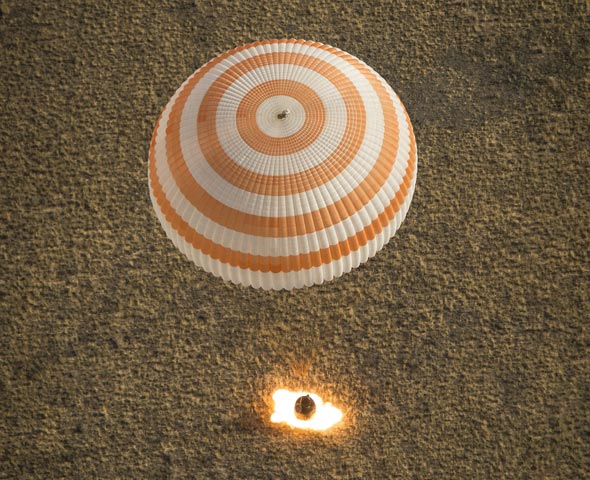Create a free profile to get unlimited access to exclusive videos, sweepstakes, and more!
“The Soft Landing Is Not Really Soft”

Every few months, astronauts from the International Space Station leave their orbiting aerie and return to Earth.* It’s a very exciting time for space exploration aficionados like me; we hang on every communication from the ground to space, wait for every checklist item to be confirmed, and if we’re so fortunate, hang on to any live video we can find.
For the astronauts and ground controllers, of course, the experience is far different. But what exactly happens up there that results in three astronauts safely returning to our planet?
The European Space Agency has put together a fantastic and enthralling video that goes through the steps taken to bring the space travelers down. This is seriously worth 20 minutes of your time.
(You really should make this HD, fullscreen, then sit back and enjoy.)
I learned a couple of things from that video (I wasn’t aware of just how much the ISS changes its orientation, called its attitude, relative to Earth for some Soyuz undockings, for example), but of everything in it, it was the very last moment of the landing that really got to me. I knew, intellectually, about the retrorockets firing when the capsule is less than a meter off the ground, and that it must be a helluva kick. But hearing just how hard a kick it is, described by astronaut Paolo Nespoli himself (at the 18:25 mark), really drives home what an ordeal getting back to the ground is. That would terrify me just as much as sitting in the rocket waiting to go up into space in the first place.
What the astronauts do to get into space, and come back after all those months, is truly amazing.
Tip o’ the heat shield to Camilla Corona.
*I used to say, “… and return home”. But I prefer to avoid conflating “Earth” and “home,” in the hope that one day their meaning will in fact be different.


























